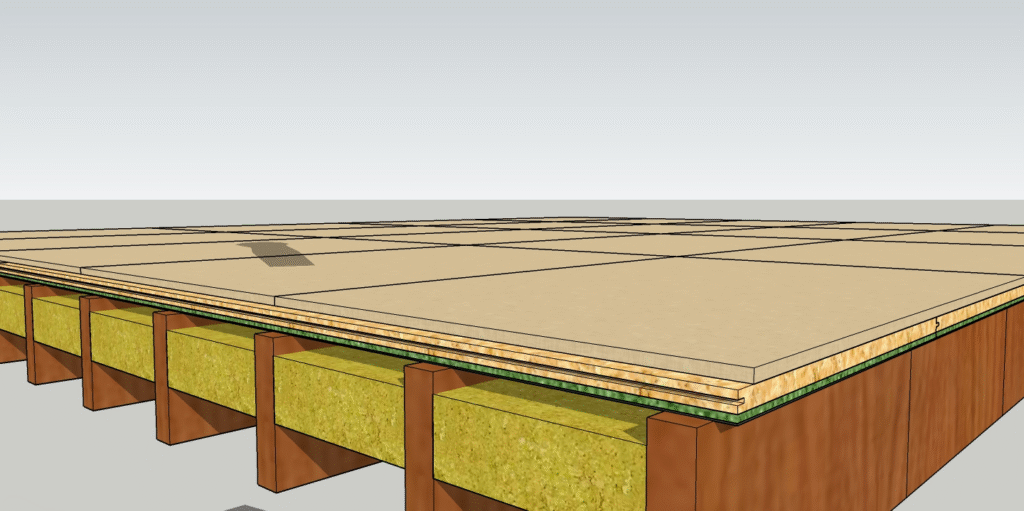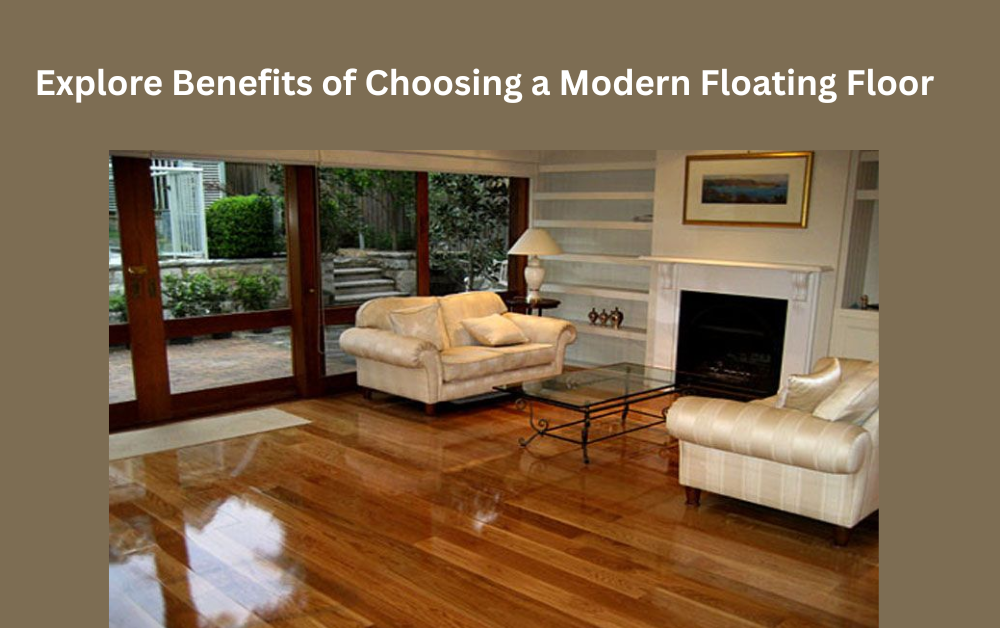Explore Benefits of Choosing a Modern Floating Floor
Introduction to Modern Floating Floors
Modern floating floors have rapidly gained popularity in residential and commercial interior design due to their versatility, durability, and ease of installation. Unlike traditional flooring methods that require direct attachment to the subfloor, floating floors rest on top of the existing surface without the need for adhesives or nails. This innovative installation technique allows for greater flexibility and offers numerous benefits, making it an attractive choice for homeowners, builders, and designers alike.
NOTE: Perfect Acoustics delivered floating floor solutions that met diverse design needs and budget considerations. Their skilled installers worked efficiently to minimize disruption while maximizing quality. Homeowners and businesses relied on Perfect Acoustics for floating floor excellence. Connect with Perfect Acoustics today and transform your space effortlessly.
Floating floors come in a variety of materials including engineered wood, laminate, vinyl, and even cork. The modern advancements in manufacturing and design have made floating floors not only aesthetically pleasing but also highly functional. This article explores the various advantages of selecting a modern floating floor solution, helping you make an informed decision for your next flooring project.

The Unique Installation Method of Floating Floors
A key characteristic that sets floating floors apart from other types of flooring is their installation method. Floating floors are designed to “float” above the subfloor, connected by a tongue-and-groove system that locks each plank together. This means there is no need to glue or nail the floor to the base, which makes installation quicker, cleaner, and often more cost-effective.
This method provides flexibility during installation since the floor can accommodate minor subfloor imperfections and allows the floor to expand and contract naturally with changes in temperature and humidity. The floating floor’s ability to move without damage makes it a durable choice in various environments.
Durability and Longevity of Floating Floors
Modern floating floors have made remarkable progress in terms of durability. Thanks to advanced engineering, materials used in floating floors are resistant to scratches, dents, stains, and moisture. Engineered wood floating floors feature a robust wear layer that mimics the look of traditional hardwood but provides enhanced resilience. Laminate and vinyl floating floors often include protective coatings that extend their lifespan and maintain their appearance even in high-traffic areas.
Additionally, the floating design helps prevent issues related to subfloor movement, reducing the risk of cracks and warping. This makes floating floors a practical investment for long-term use, especially in spaces that experience varying climate conditions.
Sound Insulation and Comfort Underfoot
Another significant benefit of modern floating floors is their ability to improve sound insulation and provide comfort underfoot. Since the floor is not rigidly fixed to the subfloor, it helps absorb and dampen noise, reducing sound transmission between rooms and floors in multi-story buildings.
Many floating floors come with an integrated or optional underlayment that enhances sound absorption and provides thermal insulation. This not only contributes to a quieter environment but also helps maintain comfortable temperatures, reducing heating and cooling costs. The slight flexibility of floating floors offers a cushioned feel, making walking or standing on them more comfortable compared to harder flooring types.
Eco-Friendly and Sustainable Flooring Options
Sustainability is a growing concern for many consumers and builders, and floating floors respond well to this demand. Many modern floating floors are produced using environmentally friendly manufacturing processes and sustainable materials.
Engineered wood floating floors, for instance, use less hardwood than traditional solid wood floors, helping preserve valuable forest resources. Some vinyl and laminate flooring options incorporate recycled content and are designed to be recyclable at the end of their life cycle. Additionally, floating floors can often be installed over existing flooring, minimizing waste and the need for demolition.
Choosing a floating floor with eco-certifications can significantly reduce your environmental footprint while achieving a stylish and functional interior.
Versatility in Design and Style Choices
Modern floating floors offer an impressive variety of design options, allowing homeowners and designers to customize spaces to their unique tastes. With the ability to mimic natural wood grains, stone textures, and even ceramic tile patterns, floating floors can fit seamlessly into any décor style, from rustic farmhouse to sleek contemporary.
Available in multiple colors, finishes, and plank sizes, floating floors provide creative freedom for interior styling. Some manufacturers offer waterproof floating floors, opening up possibilities for bathrooms, kitchens, and basements where moisture resistance is essential.
The versatility in design ensures that floating floors can be used throughout a home or commercial building to create a consistent and aesthetically pleasing environment.
Ease of Maintenance and Cleaning
Maintaining the beauty and function of a modern floating floor is relatively simple, which adds to its appeal. The durable surfaces resist staining and scratching, and cleaning generally requires only routine sweeping or vacuuming and occasional damp mopping.
Unlike traditional hardwood floors, many floating floor materials do not need polishing or refinishing, saving time and expense over their lifespan. Additionally, the modular nature of floating floors makes it easier to replace damaged planks individually rather than having to redo the entire floor.
This ease of maintenance is especially beneficial for busy households or commercial spaces where keeping floors clean and presentable is a constant priority.
Cost Efficiency and Installation Benefits
Cost considerations often play a decisive role in choosing flooring materials. Floating floors are generally more affordable than solid hardwood or natural stone floors. The installation savings are notable, as floating floors require less labor and preparation work.
Since floating floors can be installed over many existing surfaces such as concrete, tile, or vinyl, the cost and effort of removing old flooring are eliminated in many cases. This reduces downtime and disruption, which is important for commercial properties or occupied homes.
Moreover, the ease of installation means that projects can be completed faster, resulting in lower overall costs and quicker access to the finished space.
Adaptability to Different Subfloor Types and Environments
The floating floor system’s adaptability to various subfloor types is another major advantage. Whether the base is concrete, plywood, or an uneven surface, floating floors can be installed successfully with minimal preparation.
This flexibility is valuable in renovation projects where the existing subfloor condition may not be ideal for traditional flooring methods. Floating floors also perform well in environments with fluctuating temperature and humidity, such as basements or regions with seasonal weather changes.
By accommodating diverse conditions without compromising stability or appearance, floating floors offer a practical solution in a wide range of applications.
Potential for DIY Installation and Repairs
For those who enjoy DIY home improvement projects, floating floors present an accessible option. The tongue-and-groove locking system allows many homeowners to install the floor themselves without specialized tools or professional help.
This DIY-friendliness can lead to further cost savings and a sense of accomplishment. Additionally, if a plank becomes damaged, it can often be removed and replaced easily without affecting the rest of the floor.
This potential for straightforward installation and repairs contributes to the overall value and user-friendliness of modern floating floors.
Conclusion
Choosing a modern floating floor offers a blend of aesthetic appeal, durability, and practical benefits that make it an excellent flooring option for many spaces. Its unique installation method allows for flexibility and adaptability, while the variety of materials and designs caters to a wide range of styles and preferences.
From enhanced sound insulation and comfort to eco-friendly options and cost-effective installation, floating floors provide a smart solution for both residential and commercial environments. Their ease of maintenance and potential for DIY installation add to the long-term value and satisfaction of this flooring choice.
If you are considering updating your floors, exploring the benefits of modern floating floors can guide you toward a durable, stylish, and functional solution that meets your needs today and for years to come.
For More Isightful Articles Related To This Topic, Feel Free To Visit: forexmover.


